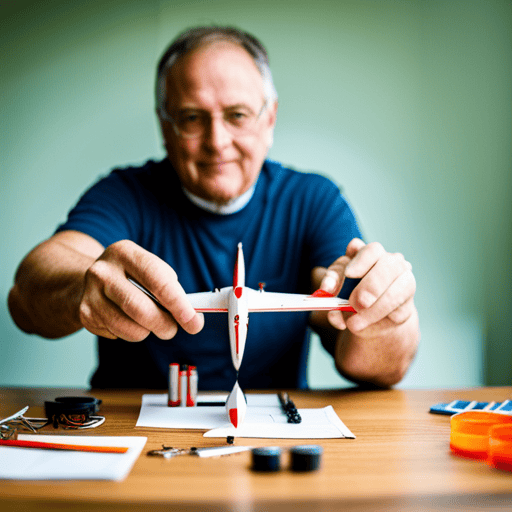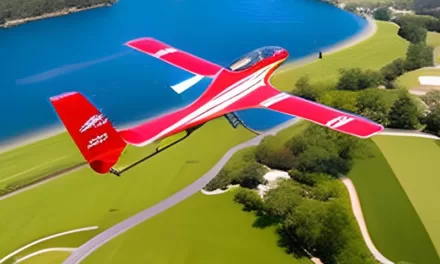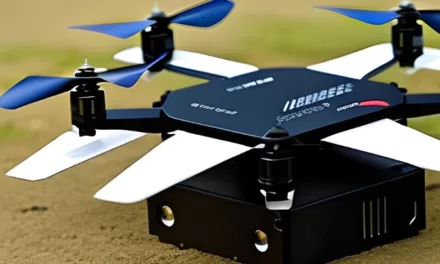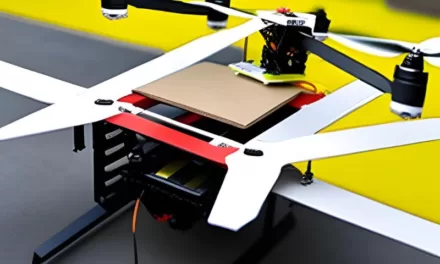Introduction to incredible RC planes
Welcome to the world of RC planes, where the skies become your playground, and the thrill of flight knows no bounds. Remote Control (RC) planes, also known as radio-controlled planes, offer enthusiasts an exhilarating experience of piloting aircraft from the ground.
Let’s dive into this captivating hobby, its various types, the technology that drives it, and how you can be part of this amazing world.

Types of RC Planes
Fixed-Wing RC Planes
When it comes to fixed-wing RC planes, the options seem endless. For beginners, trainer planes are the ideal starting point. They provide stability and easy maneuverability to help you gain confidence. For those seeking adrenaline-pumping adventures, sports planes offer thrilling aerobatic capabilities.
History buffs can opt for warbirds, which are scale replicas of famous military aircraft, bringing a touch of nostalgia to the skies. Gliders are perfect for tranquil soaring flights, while scale models impress with their attention to detail, replicating real planes with astonishing accuracy.
Rotary-Wing RC Planes
In contrast, rotary-wing RC planes bring the excitement of vertical takeoffs and landings. Helicopters offer precise control and maneuverability, making them a popular choice among experienced pilots. Quadcopters and multirotors have gained immense popularity due to their stability and versatility, perfect for aerial photography and FPV racing. For a mix of fixed-wing and rotary-wing capabilities, hybrid designs provide an enticing fusion of flight mechanics.
Choosing the Right RC Plane
Selecting the perfect RC plane involves considering your skill level, desired power source, and the plane’s size and building materials.
Beginners should start with user-friendly trainer planes, while experienced pilots can explore more complex models.
Power sources can vary from electric motors for simplicity to nitro or gas engines for added realism and power.
The wingspan and overall size will determine the plane’s stability and flying characteristics, while durable build materials are essential to withstand rough landings and crashes.
Advanced RC Plane Technology
Modern RC planes are equipped with cutting-edge technology that takes the flying experience to new heights.
Advanced remote control systems offer improved range and precision, ensuring seamless communication with your aircraft. Brushless motors and Electronic Speed Controllers (ESCs) enhance efficiency and power delivery.
Gyro stabilization systems help stabilize the plane during windy conditions and challenging maneuvers, allowing for smoother flights.
First-Person View (FPV) systems enable pilots to view the world from the cockpit, providing an immersive flying experience.
Building Your Own RC Plane
For enthusiasts seeking a more hands-on approach, building your own RC plane can be immensely rewarding. DIY kits come with pre-cut parts and comprehensive instructions, simplifying the assembly process.
On the other hand, scratch-building allows for complete customization, where you can bring your unique designs to life. All you need is the right set of tools, quality materials, and the patience to enjoy the journey from start to finish.
Safety Precautions and Regulations
Flying RC planes is a fun-filled activity, but safety should always be a top priority. Abiding by local regulations and flying in designated areas ensures a safe and enjoyable experience for everyone.
Adhering to height restrictions prevents interference with other aircraft and maintains a safe distance from populated areas. Regular maintenance checks are crucial to keep your plane in top condition, minimizing the risk of accidents.
Additionally, considering insurance coverage helps protect against unforeseen liabilities.
Tips for Beginners
Embarking on your RC plane journey can be exhilarating but may also feel overwhelming at first. Seeking guidance from experienced pilots or joining a local RC club can provide valuable insights and support.
Starting with flight simulators allows you to practice flying virtually, honing your skills before taking to the skies. Choosing a trainer plane with stability-assisting features makes the learning process smoother, and practicing in calm weather conditions fosters confidence and control.
Thrilling RC Plane Stunts
Once you’ve mastered the basics, it’s time to push the boundaries of aerobatics with some thrilling stunts. Performing loops and rolls showcase your plane’s agility and your piloting skills.
For a jaw-dropping spectacle, try inverted flight, where your plane flies upside down with grace. Knife-edge flight involves flying sideways, seemingly skimming through the air. And for the most daring pilots, 3D aerobatics challenge gravity with mind-blowing flips and tumbles.
Joining RC Plane Clubs and Events
RC plane clubs offer a sense of community and camaraderie among like-minded enthusiasts. Being part of a club provides numerous benefits, such as access to flying fields, shared knowledge, and group events.
Participating in competitions allows you to showcase your flying prowess and learn from others. Networking with fellow pilots opens doors to new friendships and valuable connections within the RC plane community.
Customizing and Modifying RC Planes
Unleash your creativity by customizing your RC plane’s appearance and performance. Painting and descaling give your aircraft a unique personality, making it stand out in the skies.
Upgrading motors and propellers can enhance speed and power, taking your flights to greater heights. Installing LED lights not only looks impressive but also aids in flying at dusk or dawn, adding a touch of spectacle to your aerial displays.
Documenting Your RC Adventures
Capturing your RC adventures allows you to relive the thrills and share your experiences with others. Mastering photography and videography techniques helps you create captivating flight videos and stunning aerial shots.
Sharing your content on social media platforms and RC forums connects you with the global RC community, inspiring others and receiving valuable feedback.
Pushing the Limits: High-Speed RC Planes
For the speed enthusiasts, high-speed RC planes present an adrenaline rush like no other. These planes are designed for maximum velocity, challenging the boundaries of RC aviation. Witnessing these speedy marvels in action is a sight to behold, showcasing the pinnacle of engineering and piloting skills.
Specialized designs, streamlined shapes, and powerful propulsion systems contribute to achieving remarkable speed records in RC aviation.
Unique RC Plane Designs
Apart from traditional designs, the RC plane world is brimming with unique and innovative creations. Flying wings eliminate the conventional tail section, providing exceptional agility and efficiency. Canard configurations feature horizontal stabilizers at the front, showcasing an unconventional layout. And for those craving jet-like performance, jet-powered RC planes deliver incredible thrust and speed, emulating the feel of real jet flights.
The Future of RC Aviation
As technology continues to advance, the future of RC aviation holds exciting possibilities. Battery technology is evolving rapidly, leading to lighter and more powerful batteries, extending flight times and improving performance. Integration of autopilot and AI systems might revolutionize the way RC planes are flown, making them more accessible and user-friendly. Additionally, emerging design concepts could give birth to entirely new types of RC aircraft, taking the hobby to unexplored heights.
Conclusion
In the realm of RC planes, the skies become a canvas for enthusiasts to paint their dreams and embrace the thrill of flying. Whether you’re a novice pilot or an experienced aviator, the world of RC planes offers something extraordinary for everyone. From the freedom of choosing the perfect aircraft to the excitement of pushing the limits with daring stunts, this hobby continues to captivate hearts and soar to new heights. Embrace the joy of RC flying and witness your dreams taking flight, one breathtaking maneuver at a time. Happy flying!
RC Planes: FAQs
What are RC planes, and how do they work?
RC planes, also known as remote-control planes, are model aircraft operated from a distance using a radio transmitter. They work by receiving signals from the transmitter, controlling the plane’s various components, such as the motor, servos, and control surfaces, enabling pilots to maneuver the aircraft while maintaining control from the ground.
What makes RC planes so incredible?
RC planes offer the exhilaration of piloting an aircraft without leaving the ground. Their versatility, ranging from graceful gliders to high-speed jets, captivates aviation enthusiasts of all ages. The ability to perform aerobatic stunts, explore new designs, and the constant advancements in technology contribute to their incredible appeal, making them a thrilling and ever-evolving hobby.
Are there different types of RC planes available?
Yes, there are various types of RC planes available, including fixed-wing and rotary-wing aircraft. Fixed-wing planes encompass trainer planes, sport planes, warbirds, gliders, and scale models. Rotary-wing planes include helicopters, quadcopters, multirotors, and hybrid designs that combine both fixed and rotary-wing capabilities. Each type offers a unique flying experience catering to diverse preferences.
What are the best RC planes for beginners?
For beginners, trainer planes are ideal as they provide stability and easy maneuverability, helping pilots build confidence. These planes often have self-leveling features and are designed to withstand minor crashes. Additionally, some entry-level quadcopters with altitude hold can be excellent choices for newcomers to RC flying.
How do I choose the right RC plane for my skill level?
Choosing the right RC plane involves considering your skill level, experience, and flying goals. If you are a beginner, opt for a trainer plane with stability features. Intermediate pilots can explore sport planes, while advanced flyers can handle more complex models like scale warbirds or 3D aerobatic planes. Always consider the recommended skill level, mentioned by manufacturers when selecting an RC plane.
What are the differences between fixed-wing and rotary-wing RC planes?
The primary difference lies in their flight mechanisms. Fixed-wing RC planes have wings that generate lift to keep the plane airborne and require forward motion to stay aloft. In contrast, rotary-wing planes, like helicopters and quadcopters, use rotating blades to generate lift, allowing them to hover and take off vertically without the need for forward motion. Each type offers unique flying experiences and challenges.
Can I build my own RC plane from scratch?
Absolutely! Building your own RC plane from scratch can be a rewarding and creative experience. It allows you to customize the design, choose premium materials, and personalize the aircraft to suit your preferences. However, scratch-building requires technical skills, patience, and attention to detail. Alternatively, you can opt for DIY kits that provide pre-cut parts and detailed assembly instructions for a smoother building process.
What materials are commonly used to build RC planes?
RC planes are typically constructed using lightweight materials such as balsa wood, foam, carbon fiber, and plastic. Balsa wood is commonly used for its strength-to-weight ratio, while foam offers durability and ease of construction. Carbon fiber and fiberglass enhance structural integrity, and plastic components provide added flexibility. Each material plays a crucial role in achieving the desired balance between weight, strength, and aerodynamics.
What are the latest advancements in RC plane technology?
The world of RC planes is constantly evolving, with technology leading to exciting advancements. Improved radio control systems provide longer range and more precise control. Brushless motors and advanced Electronic Speed Controllers (ESCs) increase efficiency and power delivery. Gyro stabilization systems aid in smoother flights and wind resistance. First-Person View (FPV) technology allows pilots to see real-time footage from the plane’s perspective, enhancing the immersive flying experience.
How do I perform aerobatic stunts with my RC plane?
Performing aerobatic stunts with your RC plane requires practice and skill. Basic stunts like loops and rolls involve controlling the plane’s elevator and ailerons to achieve full rotations. Inverted flight requires precise control to fly the plane upside down. Knife-edge flight involves banking the plane sideways while maintaining altitude. For more advanced 3D aerobatics, pilots execute complex tricks like torque rolls, tumbles, and hover-like maneuvers, necessitating proficiency in throttle and control inputs.
Are there RC plane clubs or communities I can join?
Yes, there are numerous RC plane clubs and communities worldwide, where enthusiasts come together to share their passion for RC flying. Joining a club offers access to dedicated flying fields, valuable guidance from experienced pilots, and opportunities to participate in fun events and competitions. It’s a fantastic way to connect with like-minded individuals, exchange knowledge, and foster lasting friendships within the RC plane community.
Can I participate in RC plane competitions?
Absolutely! RC plane competitions provide a platform for pilots to showcase their flying skills and compete in various categories. Events range from precision aerobatics to speed races and even scale model displays. Participating in competitions not only offers a chance to win prizes but also enables you to learn from other pilots, challenge yourself, and celebrate the joy of RC aviation with fellow enthusiasts.
Are there safety precautions I should follow while flying RC planes?
Safety is paramount in RC flying. Always fly in designated areas away from populated areas and airports. Adhere to height restrictions to avoid interfering with other aircraft. Regularly inspect and maintain your RC plane to ensure it is in good working condition. Consider obtaining insurance coverage to protect against unforeseen liabilities. Always follow local regulations and guidelines to ensure a safe and enjoyable flying experience.
What are the regulations for flying RC planes in my area?
The regulations for flying RC planes may vary depending on your country, state, or local jurisdiction. It is essential to familiarize yourself with the rules and guidelines specific to your location. In many places, RC pilots must abide by height restrictions, keep a safe distance from people and property, and avoid flying in restricted airspace. Following these regulations promotes safety and maintains harmony with other airspace users.
How do I take care of and maintain my RC plane?
Proper maintenance is crucial for the longevity and performance of your RC plane. Regularly inspect the airframe for any signs of wear, damage, or loose components. Keep the motor and electronics clean and free from debris. Check the battery’s health and charge it correctly. Balance and align the propellers to ensure smooth flights. Following the manufacturer’s maintenance guidelines will help keep your RC plane in top condition.
Are there high-speed RC planes available?
Yes, high-speed RC planes are available for those seeking adrenaline-pumping thrills. These planes are designed for maximum velocity, pushing the boundaries of RC aviation. They often feature streamlined designs, powerful motors, and precise aerodynamics to achieve remarkable speeds. High-speed RC planes provide an exciting challenge for experienced pilots and create awe-inspiring spectacles in the skies.
What are the challenges of flying high-speed RC planes?
Flying high-speed RC planes presents unique challenges due to their velocity. Pilots must maintain constant focus and quick reflexes to react to rapid changes in flight path. Wind resistance can affect stability at high speeds, requiring precise control inputs. Additionally, finding suitable flying locations to accommodate high-speed flights while adhering to safety regulations can be a challenge. However, the thrill of mastering these challenges is immensely rewarding for skilled aviators.
Can I customize the appearance of my RC plane?
Absolutely! Customizing the appearance of your RC plane allows you to add a personal touch and make your aircraft stand out in the skies. You can paint the plane in your favorite colors, apply decals or stickers, and even create custom designs. The process of customizing your RC plane provides a creative outlet to express your individuality and adds a sense of pride to your flying adventures.
How can I upgrade the performance of my RC plane?
Upgrading the performance of your RC plane can enhance its capabilities and improve the flying experience. Consider installing higher-capacity batteries for longer flight times, upgrading to more powerful motors for increased speed and thrust, and fine-tuning the control surfaces for improved maneuverability. Additionally, advanced gyro stabilization systems can aid in maintaining stability during challenging flights.
Are there RC planes with first-person view (FPV) capabilities?
Yes, many modern RC planes are equipped with FPV capabilities. FPV systems enable pilots to view real-time footage from an onboard camera, offering an immersive and thrilling flying experience. With FPV goggles or screens, pilots can see exactly what the plane “sees,” allowing for precise navigation and the feeling of being inside the cockpit during flight. FPV flying adds an exciting new dimension to RC aviation.
What are the best cameras for capturing RC plane flights?
When choosing cameras for RC plane flights, lightweight and high-quality options are preferred. Action cameras, such as GoPro or DJI Osmo Action, are popular choices as they offer excellent video quality, stabilization, and are compact in size. Some FPV cameras are purpose-built for RC planes, providing low latency and adjustable angles. Always ensure the camera’s weight doesn’t compromise the plane’s performance and balance.
How can I share my RC plane adventures with others online?
Sharing your RC plane adventures online is a fantastic way to connect with the global RC community and inspire fellow enthusiasts. You can create captivating flight videos and aerial photographs and share them on social media platforms like YouTube, Instagram, or Facebook. Participating in RC plane forums and groups allows you to share experiences, receive feedback, and engage with other enthusiasts who share the same passion for RC flying.
Are there special events or shows dedicated to RC planes?
Yes, RC plane events and airshows are common around the world. These gatherings bring together pilots and enthusiasts to showcase their aircraft, perform aerobatics, and share their passion for RC aviation. From local club events to large-scale international airshows, these gatherings offer a great opportunity to witness incredible RC plane displays, learn from experienced pilots, and immerse yourself in the thrill of RC flying.
What are the most unique and unusual RC plane designs?
The world of RC planes never ceases to amaze with its creativity. Unique designs include flying wings, which lack a conventional tail section for exceptional agility and efficiency. Canard configurations feature horizontal stabilizers at the front, setting them apart from traditional designs. Moreover, jet-powered RC planes simulate the experience of real jets, soaring at high speeds, and adding an extra layer of excitement to the hobby.
How are flying wings different from traditional RC plane designs?
Flying wings, unlike traditional RC planes, lack a distinct tail section, which makes them inherently different in their flight characteristics. With no tail, flying wings rely on control surfaces called elevons, which combine the functions of elevators and ailerons. This design eliminates the drag and weight associated with a tail, resulting in improved efficiency and agility, but it also demands more precise control inputs from the pilot.
Can I fly RC planes indoors or only outdoors?
RC planes can be flown both indoors and outdoors, depending on the size and design of the aircraft. Smaller, lightweight indoor planes are specifically designed for indoor use and provide a safe and enjoyable flying experience in confined spaces. Larger, more powerful planes are better suited for outdoor flights, where they have ample space to maneuver and soar through the skies freely. Always consider the plane’s size and power when choosing the flying location.
What are the key differences between RC helicopters and RC planes?
The main differences between RC helicopters and planes lie in their flight capabilities. RC helicopters can hover and take off vertically due to their rotary-wing design, while RC planes require forward motion to generate lift. Helicopters offer more precise control in confined spaces and are ideal for aerial photography. On the other hand, planes excel in speed, endurance, and long-distance flights, making them more versatile for various flying styles.
How do I troubleshoot common issues with my RC plane?
Troubleshooting common issues with your RC plane requires a systematic approach. If the plane is not responding to controls, check the batteries in the transmitter and aircraft. Ensure all components are connected securely, and the control surfaces move freely. If the plane experiences trim or balance issues, adjust the control linkages. Diagnosing motor or electronic problems might require some technical expertise, and seeking advice from experienced pilots or online forums can be helpful.
Are there any safety tips for flying RC planes in windy conditions?
Flying RC planes in windy conditions requires extra caution. Avoid flying in strong winds that exceed your plane’s recommended limits. If you must fly in windy conditions, use a larger, more stable aircraft with wind-resistant design features. Keep the aircraft at a safe altitude and away from obstacles. Be prepared for gusts and sudden changes in wind direction. Always prioritize safety, and if the wind becomes too challenging, consider postponing your flight until conditions improve.
What is the future outlook for RC plane technology?
The future of RC plane technology looks promising, with ongoing advancements enhancing the flying experience. We can expect more efficient and powerful propulsion systems, longer-lasting and lighter batteries, and improved radio control systems. Innovations like AI-assisted flight controls and automated features may make RC planes more user-friendly and accessible to beginners. Additionally, the integration of virtual reality and augmented reality may create new dimensions in the FPV experience. The future holds exciting possibilities for RC aviation.




